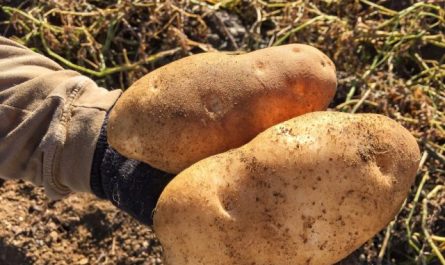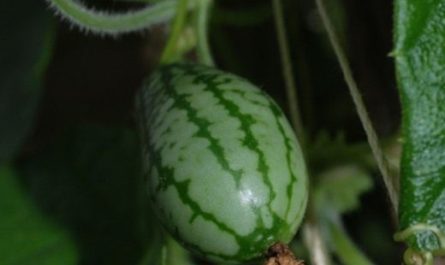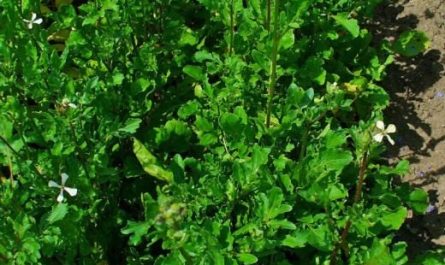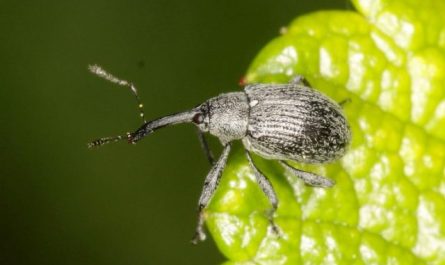The currant bud mite is almost invisible, as it does not reach even a millimeter in length. However, despite its microscopic size, it can cause a lot of trouble. The mite is a malicious pest of currants, capable of not only leaving summer residents without a harvest, but also destroying bushes. Fighting the parasite is an integral part of the gardener’s work, and an integrated approach is important here. We will tell you how to understand that the currant is affected by the bud mite, and what to do to protect berry crops from the pest.

What is a currant bud mite
The currant bud mite, also known as the currant mite, currant bud mite (Cecidophyopsis ribis) is a species of four-legged microscopic mites from the genus Cecidophyopsis. It is extremely difficult to see the arthropod with the naked eye, since the length of its white, worm-like body is only 0,2 mm. It usually affects black currants, less often gooseberries, red and white currants. The pest’s development cycle occurs in 4 stages.
Mites overwinter inside the buds of berry bushes. With the arrival of spring, as soon as the air warms up to 5 °C, the pests begin to actively reproduce and lay eggs. One bud can simultaneously contain up to 600 (according to other sources, up to 3-8 thousand) individuals. As a result, the bud swells to the size of a pea.
In the second half of spring and in summer, the mites continue to actively reproduce, settling in other buds and feeding on plant sap. In autumn, the mites settle down for the winter, occupying new buds or hiding under the bark.

During the season, the currant bud mite manages to produce 5 generations: 2 in the spring and 3 in the autumn-summer period. This entire army is dispersed throughout the site with the help of wind, undisinfected tools and birds. The pest can also be brought into the garden along with seedlings.
Why is the bud mite dangerous for currants?
The currant bud mite lives everywhere where currants are grown. Using a piercing-sucking apparatus, it sucks the juice out of cultivated plants, causing them irreparable harm.
A bush infected with a pest lags behind in development and becomes weakened. The shoots become curved and the ovaries fall off. In case of severe damage, the plant dies.
During the flowering period of the bush, the currant mite moves to new, young buds and sucks the juice out of them. As a result, they dry up without ever blossoming.
In addition, it is a carrier of a dangerous viral disease – blackcurrant terry (reversion). It manifests itself in terry and color change (to purple or dark red) of flowers. Such flowers do not form ovaries.

The bud mite is one of the main pests of black currant, which can damage up to 50-60% of all buds on the affected plant. As a result, the bush stops growing and its yield is greatly reduced. With an intensive invasion, you can not only not wait for berries, but also lose the currant plantation.
How to understand that currants are affected by bud mites
Signs of blackcurrant bud mite infestation:
- The main specific feature is that the currant buds swell, becoming large, about 1 cm in diameter. Outwardly, they resemble a loose, multi-layered head of cabbage.
- The leaves change shape, they become coarser, paler and wither.
- There are few flower clusters and flowering is sparse.
- The bushes wither, slow down or stop growing.
Deformed, damaged shoots can already be seen in August. But since the reasons for the curvature of branches can be different, it is better to pay attention to the buds. At the end of winter – beginning of spring, they become rounded and too large, while healthy ones remain pointed, elongated and small.
How to fight currant bud mite
It is not easy to overcome the currant bud mite. A single treatment of the bushes will not be enough. You will have to use a whole range of measures to cope with the invasion of the dangerous pest and save your garden.
Mechanical methods
In spring, before the buds open, you need to carefully examine the currants and manually remove all swollen and deformed buds. If there are too many of them on a branch, it is cut off entirely. In case of severe pest damage, the bush is cut off completely. Gradually, the plant will give new shoots and in 2-3 years will begin to bear fruit. One mechanical method is not enough. After that, the currants are treated with acaricides.

Important! Affected plant debris must be burned immediately, and the tools used to carry out the work must be disinfected to avoid further spread of arthropods.
Chemical methods
The most effective way to get rid of the currant mite is to use chemicals. If the pest has already affected the currant, spray the bushes with a solution of colloidal sulfur or “Neoron” in the spring during the budding phase. After the fruit has set, you can repeat the treatment with more gentle biological preparations or continue to fight the mite with folk methods. If the garden is heavily affected, spraying with chemicals is repeated (for example, “Fufanon”) after harvesting.
Important! It is better to spray the bushes in warm, dry weather. This will help achieve better results. Colloidal sulfur is not used to treat gooseberries – the preparation leaves burns on the leaves.
Use of biopreparations
Biological preparations are more gentle, but less effective than chemical ones. They are created on the basis of substances secreted by microorganisms during their life processes, or spores of beneficial fungi and bacteria that suppress the development of mites and other pests.

A positive effect from the use of such acaricides is possible only if they are used in warm weather (optimum air temperature is 18-25 °C). The most effective products are Fitoverm, Bitoxibacillin and Vertimek. When using most biological products, one treatment is usually not enough (a detailed application scheme is described in the instructions for each of the acaricides).
Folk methods
Some summer residents pour boiling water over currants before the buds open in March. The main thing here is not to overdo it and not to burn the plants. To simplify the procedure, the branches can be tied together. The water should be about 70 °C. It is poured into a watering can and the bush is treated quickly at one time, no longer than 5 seconds. From 5 liters to 1 bucket is poured onto the bush, depending on its size.

In case of isolated kidney damage or for preventive purposes, instead of industrial preparations, gardeners often use folk remedies to combat currant bud mites.
Garlic
Take 400 g of heads and grind them. Pour 10 liters of water over them and leave for 2 days. Then mix the solution thoroughly, filter and immediately spray the bushes with it.
Tobacco
Dried tobacco leaves (400 g) are poured with ten liters of hot (but not boiling!) water and left for two days. Then filtered, diluted with water in a ratio of 1:1. For better adhesion, add 50 g of soap dissolved in water for every 10 liters of liquid and treat the currants with the composition.
Lukovaâ Husk
Take 300 g of onion peel, pour hot water (10 l) over it and leave it in a warm place for hours. Then strain the solution and use it immediately.
herbaceous plants
To combat spider mites, use infusions of tomato tops, marigolds, celandine, and dandelions. A third of a bucket of green mass is poured with 2/3 hot water, infused for at least a day, and the bushes are sprayed.
Currant and gooseberry treatments can be carried out once every 7-10 days before the generative buds open and after the fruit sets. During flowering, the bushes are not sprayed against pests. Infusions rather repel bud mites than cause them any harm, so the effect of their use is short-term.
Biological methods
In natural biotopes, a balance is always maintained. Since nature has created parasites, it means that their enemies also exist in opposition to them. These are predatory entomophagous insects that feed on pests and their larvae. The group of “voluntary helpers” of the gardener in the fight against pests includes ladybugs, lacewings, hoverflies, wasps, encarsia. Attract them to the site by creating favorable living conditions, and they will significantly reduce the number of ticks in the garden.
Another biological method is planting plants with a strong smell near berry bushes that repel the currant bud mite. These can be onions, garlic, chrysanthemums, coriander, marigolds.
Preventive measures to combat currant bud mite
One of the best ways to combat the currant bud mite is prevention. It is easier to prevent the garden from becoming infected than to constantly fight the pest. Most often, the mite enters the area with seedlings. Therefore, before planting them, immediately after purchase, soak the bushes for a day in a solution of colloidal sulfur (40 g) and “Agravertin” (10 g), diluted in 10 liters of water.

The following measures provide good help in the fight against kidney mites::
- Annual preventive treatment of the garden with acaricides in spring and autumn.
- Keeping the area clean. Timely removal of old leaves, cut branches and mowing of grass leave no places for parasites to hide.
- Planting only varieties of black currant that are resistant to pest attacks: ‘Yadrenaya’, ‘Leningradsky Velikan’, ‘Cherny Zhemchug’, ‘Gulliver’.
- Immediate removal of affected buds and shoots.
- Disinfect tools before pruning each new plant.
- Loose, sparse plantings so that the bushes are well ventilated and receive enough sun.
Grow berry crops on a high agricultural background. Regularly feed, water the plants, loosen the trunk circles, weed out the weeds. Strong, strong currant and gooseberry bushes are less likely to be attacked by the currant bud mite than weakened ones.




















